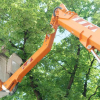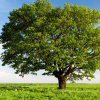
Ever noticed how towns and neighborhoods that have a lot of street trees, forested parks, and sidewalk gardens look so beautiful and refreshing? This is the result of good urban forest management.
There’s no denying that trees, shrubberies, and flowery plants can enhance the appearance of an urban environment. However, a solid urban forest management plan goes beyond the aesthetics of an urbanized area.
Picture this for a moment
You’re driving down a long stretch of highway in a convertible. The road’s center barrier is lined with shrubberies and tall beautiful trees. Doesn’t it feel refreshing? Does that kind of scenery not put you in a good mood and improve your driving experience? Traffic jam or not, lush greeneries are a way better sight than gray concrete and painted metal bars, don’t you agree?
Believe it or not, there are many advantages and benefits to a well-planned urban forest development.
But what are the keys to an effective plan?
- A clear vision of the urban forest development.
- An accurate assessment of the current condition of the urban forestry.
- Clear goals and objectives for the urban forest development.
- A proper course of action based on gathered information and established needs for the development of the urban forest.
- A comprehensive implementation plan with assigned responsibilities, specific dates, and deadlines.
- A good monitoring plan to evaluate progress, spot inefficiencies, and make revisions as needed.
These key factors can help maximize the benefits of the urban forest development, as well as make the management process much more efficient.
The Main Benefits of Urban Forestry and Urban Forest Management
There are environmental, economic, and health benefits of effective urban forest management. However, to better understand these benefits, we must first look at a few facts about trees and other plant life.
- Trees clean the air around us through photosynthesis. Through this process, trees can effectively absorb greenhouse gases such as carbon dioxide and release pure oxygen as a byproduct, thus reducing global warming.
- Trees help reduce flooding and water pollution in urbanized areas. In rural and mountainous regions, trees play a significant role in preventing landslides and soil erosion. This is because trees can absorb large amounts of rainwater, minimizing runoff and improving g soil quality. The same principle also applies to urban areas. This is especially crucial in densely populated urban centers because the runoff in these areas often contain chemicals and harmful pollutants from the streets, landfills, and sewage.
- Trees help promote biodiversity. Trees are not just outdoor ornaments for people to enjoy. They actually provide a natural habitat for various animals as well as other plant life.
Advantages That Good Urban Forest Management Can Offer
- Well maintained trees can help increase the value of either residential or commercial property.
- They help lower air temperature in urban environments, while concrete does the opposite.
- Because air temperature is lowered, energy consumption is also reduced, particularly in homes, offices, and other facilities.
- During the winter, strategically planted trees serve as windbreakers. Again minimizing energy usage.
- Air quality is significantly improved in urban centers, as trees absorb greenhouse gases and other air pollutants emitted by buildings, motor vehicles, and other potential sources.
- Trees and soils play a crucial role in improving water flow and quality. With good urban forest management, the need for costly stormwater treatment is significantly reduced since most of the pollutants and harmful substances from the runoff are absorbed by the soil and the trees.
- With trees visible along roadsides and highways, traffic is less stressful and calmer heads will prevail.
- Shopping districts that have a streetscape lined with trees and sidewalk gardens may experience an increase in revenue. Studies show that consumers are more likely to make a purchase in a greener and more relaxing environment.
- Strategically placed dense trees, shrubberies, and gardens can help reduce traffic noise.
- Urban forestry helps create an aesthetically pleasing and emotionally satisfying environment in which to live, work, and spend leisure time for city dwellers.
The bottom line:
The presence of an urban forest and pushing for urban greening helps promote individual well-being, public health, and economic vitality for any city, town, or suburb.










